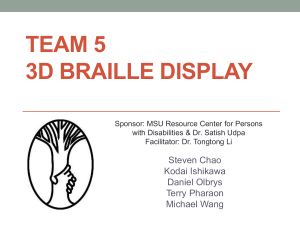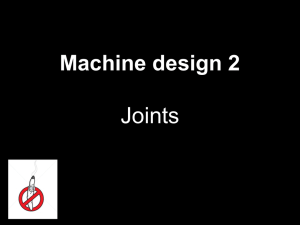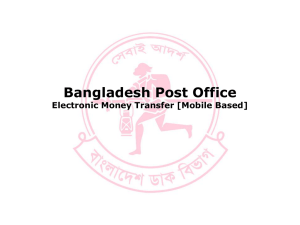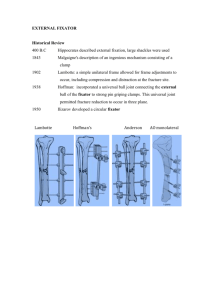How to Care for an External Fixator
advertisement
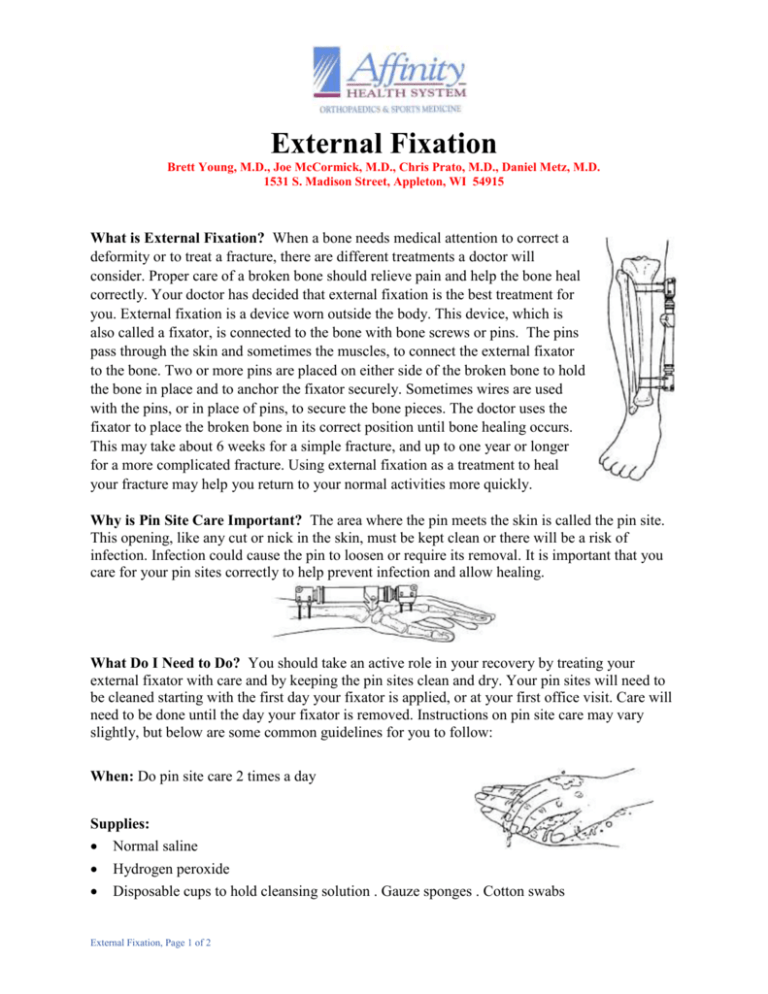
External Fixation Brett Young, M.D., Joe McCormick, M.D., Chris Prato, M.D., Daniel Metz, M.D. 1531 S. Madison Street, Appleton, WI 54915 What is External Fixation? When a bone needs medical attention to correct a deformity or to treat a fracture, there are different treatments a doctor will consider. Proper care of a broken bone should relieve pain and help the bone heal correctly. Your doctor has decided that external fixation is the best treatment for you. External fixation is a device worn outside the body. This device, which is also called a fixator, is connected to the bone with bone screws or pins. The pins pass through the skin and sometimes the muscles, to connect the external fixator to the bone. Two or more pins are placed on either side of the broken bone to hold the bone in place and to anchor the fixator securely. Sometimes wires are used with the pins, or in place of pins, to secure the bone pieces. The doctor uses the fixator to place the broken bone in its correct position until bone healing occurs. This may take about 6 weeks for a simple fracture, and up to one year or longer for a more complicated fracture. Using external fixation as a treatment to heal your fracture may help you return to your normal activities more quickly. Why is Pin Site Care Important? The area where the pin meets the skin is called the pin site. This opening, like any cut or nick in the skin, must be kept clean or there will be a risk of infection. Infection could cause the pin to loosen or require its removal. It is important that you care for your pin sites correctly to help prevent infection and allow healing. What Do I Need to Do? You should take an active role in your recovery by treating your external fixator with care and by keeping the pin sites clean and dry. Your pin sites will need to be cleaned starting with the first day your fixator is applied, or at your first office visit. Care will need to be done until the day your fixator is removed. Instructions on pin site care may vary slightly, but below are some common guidelines for you to follow: When: Do pin site care 2 times a day Supplies: Normal saline Hydrogen peroxide Disposable cups to hold cleansing solution . Gauze sponges . Cotton swabs External Fixation, Page 1 of 2 Steps of the Procedure: 1. Wash your hands very well, including between your fingers and the back of each hand. Hand washing is the single most important thing to do to prevent infection. Use a paper towel to dry your hands and dispose of it after use. 2. Mix cleansing solution by pouring equal amounts of normal saline and hydrogen peroxide into a disposable cup. 3. Cleaning the site: Dip the cotton swab into the cleansing solution. Use the cotton swab to clean one pin site at a time. Start with a new cotton swab for each pin site. Swab in a circular motion, always starting at the pin site and moving outward from the pin. Remove any crust that may have formed. Change cotton swabs as often as necessary. After all the drainage is removed, dry the pin site with a new cotton swab. 4. Cleaning the pin: Clean the entire length of the pin with a 2x2 gauze. Use a new piece of gauze for each pin. If there is drainage the first few days after the pins are placed, you may use a small gauze around the pin. This will hold the drainage. Change the gauze each time you do pin care or more often if the gauze is wet. After the first few days, when the pin sites are dry, gauze should not be used. Instead, leave the pin sites uncovered and exposed to the air. 5. Place the materials used for cleaning into a bag for disposal. At the end of each time you clean your pin sites, wash your hands. In the Shower: After you have worn your external fixator for 10 days, your doctor may allow you to shower while wearing your fixator. While in the shower, gently clean your external fixator. Then dry the fixator thoroughly with a clean towel. After your shower, always clean your pin sites in the manner described above. When to Call your Doctor: Even with excellent pin site care, there is a chance that the sites may become infected or cause problems. It is possible that you might see one or more of the following symptoms of infection: Redness at the pin site . Swelling at the pin site Thick or colored discharge from the pin site . Pin becomes loose or moves Pain that continues or soreness at the pin site . Fever more than 101.5 degrees If you have any of these symptoms, call your doctor immediately at (920) 996-3700. After hours, an Orthopaedic Surgeon is available by having the St. Elizabeth’s Hospital operator page the on-call orthopaedic physician. Please call the office sooner if you have any further questions. External Fixation, Page 2 of 2


